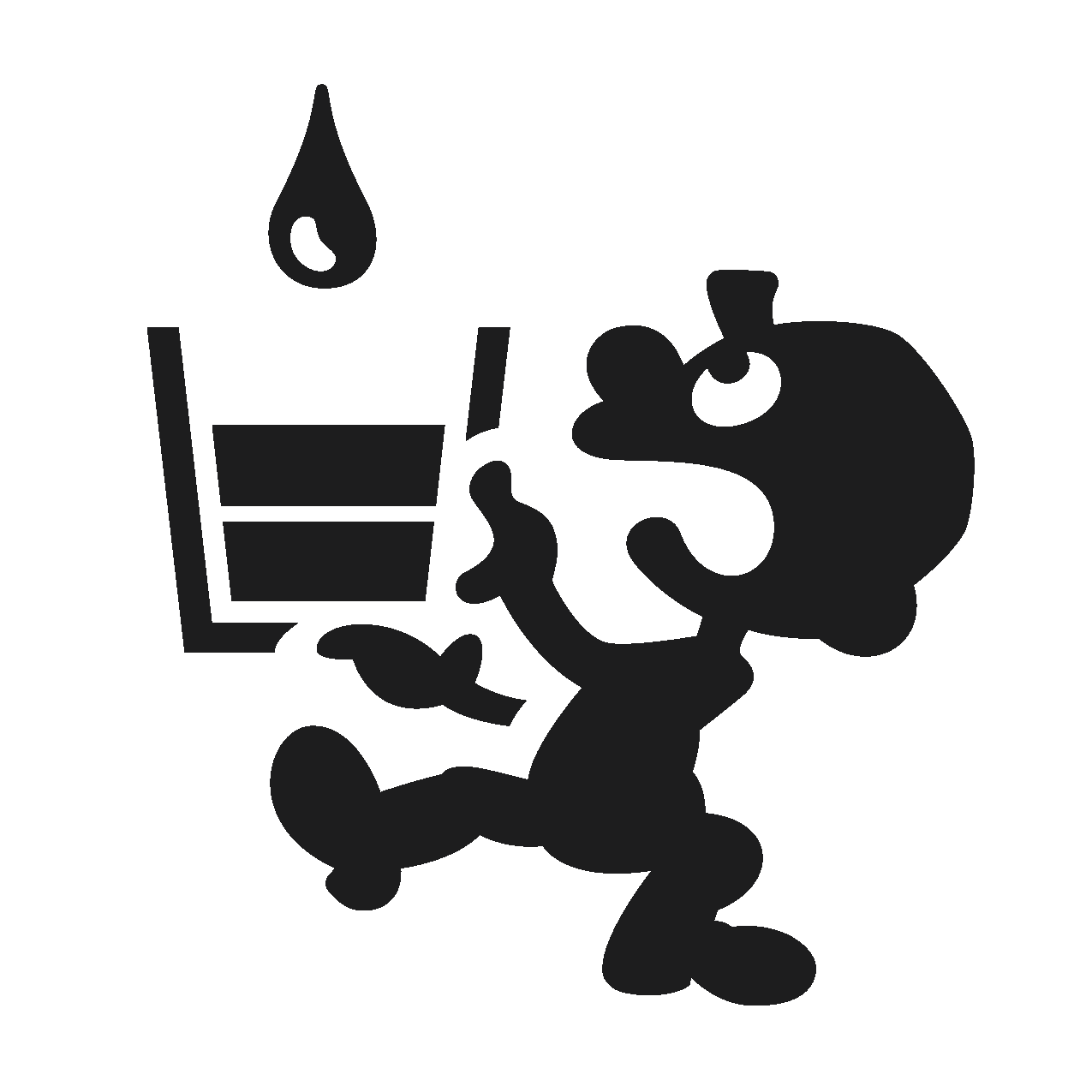I’m not sure I agree with the take for farenheit. It’s an arbitraty choice, and to me who grew up in a country that uses celsius, I find that far easier to understand and farenheit may as well be random numbers to me.
Whatever your grew up with will always seem more intuitive for most people. But given that I grew up with Fahrenheit, the whole “0 is cold as fuck, 100 is hot as fuck” thing works for me.
Farenheit is asking Americans how hot they feel.
Yeah, pretty much. I figured it was probably implied that I’m in the states. :)
I mean, SI units are objectively the best, and align with metric in most cases, but my brain is conditioned to accept Fahrenheit and miles per hour natively. Celsius and km/h have to go through an interpreter to convert them.
I have to say though, km/h has that “0 to 100” thing going for it that Fahrenheit does. 100 isn’t the fastest you’ll go, but it’s a typical highway speed.
I have to say though, km/h has that “0 to 100” thing going for it that Fahrenheit does. 100 isn’t the fastest you’ll go, but it’s a typical highway speed.
but we could be using meters per second
Do Americans feel heat differently or something?
They’re one of only 3 countries in the world who still use °F, and represent 98% of the population who do so. So it’s basically just America.
So because right now only Americans use fahrenheit, it must be bad? Holy logical fallacy batman
No it’s bad for many reasons, that’s just why people say it’s American
Outside of the USA noone knows what idk, 50°F feels like. Probably around room temperature since you say it’s based on how humans feel but I have no idea.
Fahrenheit is our broken clock being right once a day
Yeah after I discovered that sort of meaning for fahrenheit, it made a lot more sense to me. So no issues with fahrenheit, but imperial is still crazy to me
As an American this is how I feel. I don’t mind Fahrenheit but for absolutely everything else I desperately wish we’d switch.
This is the way.
“I grew up with a completely different scale, so this scale makes no sense to me!”
Well no fucking shit.
I was trying to be polite as to not trigger Americans which generally happens when you critique Imperial measurements. The post makes no sense to me as it assumes that Farenheit is correct for humans to communicate temperature. The post should read.
Celcius is basically asking water and most humans how hot they feel, Kelvin is basically asking atoms how hot they feel and Farenheit is basically asking me how hot it feels because I didn’t learn the others.
Everybody learned the others.
I know someone who knows both “natively” and celsius is much more logical to them because 1. kelvin has the same steps as celsius so for any science its much easier 2. freezing is 0 celsius so for weather(the thing you use temperature most commonly for) its really useful. Same with cooking.
“Oh but 100 Fahrenheit means 100/100 on the hot scale, it just makes intuitive sense!”
WHAT DOES THAT EVEN MEAN?? Fahrenheit lovers literally don’t know how ridiculous they sound
Right? Lol
Americans just assume their experience is the universal one. They can’t possibly imagine that F might be gibberish to someone who grew with Celsius or that people who grew up with Celsius can intuitive tell how hot something is in Celsius.
When it’s above 100, people who have options for something lower will generally go for them. Similarly for under 0. OK, so as PancakeLegend@mander.xyz pointed out, such sensitivities might be specific to US culture, but theoretically, how much would we have to expand the 0-100 Fahrenheit range so that 0 is too cold for pretty much everyone and 100 is too hot for pretty much everyone? 0 goes to -10, 100 to 140? A new-Fahrenheit degree would still be more precise than a Celsius degree.
My point is “really hot” and “really cold” are not useful reference points to ascribe to, no matter what numbers you’re using. If i was coming up with a measurement system for brightness and i said 1000 was “really bright” would you be able to tell me anything about 500? No because you literally have no reference frame for what i mean by “really bright”. It’s the same thing when Americans describe Fahrenheit to the rest of the world. You have to experience the data points, and at that point, whether you use 0 to 100, -20 to 40, or 250 to 310, it doesn’t matter. You will just intuitively understand the scale and so there’s no inherent benefit.
What’s not to get lol. Think about when it’s really really cold outside. That’s 0. Think about when it’s really really hot outside. That’s 100.
What’s not to get lol. Think about when it’s really really cold outside. That’s 0.
No? Lmao
Not cold enough for you?
Nah it’s more like, one degree fahrenheit is the smallest change in temp that the average human can sense.
I call bullshit, like yeah I’m sure that’s the smallest degree or whatever, but how ‘hot’ or ‘cold’ something feels is up to way more than just temperature like humidity, wind chill if it’s sunny or cloudy so in a real example I doubt a person can notice the difference between a 66°F and 65°F day because there’s so many other factors. And you know what it is actually really bad at? Telling people when stuff freezes, you think some person from texas or nevada or any place that usually doesn’t get cold enough knows the exact freezing point in fahrenheit? Most people will guess around 30 while pretty much everyone knows that the freezing point of water in celsius is 0°
So humans feel cold at 0F and hot at 100F? I dont think thats true. Humans start quickly dying at something around 32F and 180F. Fahrenheit is complete nonsense. It has nothing to do with humans. And considering humans are mostly water Celsius seems a much better fit.
Humans start quickly dying at something around 32F and 180F.
They do? 32F is 0C, it very routinely gets below freezing in many inhabited parts of the world, including the US, and people get along just fine with some precautions. Likewise with 100F (not sure what 180F has to do with it). So yeah, 0F and 100F are around the extremes of what humans regularly experience. (though it does, of course, get hotter and colder in some places).
Well if you’re going to bring precautions into it, we may as well say the upper and lower bounds should include things like ‘feels hot even with air conditioning on’ or ‘survivable with a heated jacket and boots’.
Sure, that’s a great scale if the goal of it is “What should I wear for the climate” and could be fully functional to that purpose with hundreds of degrees of the scale.
What we base scales on are entirely arbitrary and meant to be there for a purpose. If that purpose is clothing than it’s succeeding at it’s job.
The Fahrenheit scale is just based on a person saying that’s what they felt like was absolutely cold and what was hot based on personal feelings and marking thermometers which ones on the market often didn’t even match each other. It was for the people as an emotional barometer to the temp. Celsius is definitely a scientist one which picked a standard but why water? They could have picked so many elements or compounds but had to specify what ocean’s water because they aren’t all equal. It’s all arbitrary. Dance in the nonsense.
So humans feel cold at 0F and hot at 100F?
In aggregate this is absolutely true, though not the point anyone is making.
Humans start quickly dying at something around 32F and 180F
Humans will die of dehydration or heat stroke quite quickly at temperatures well below 180F. In fact that’s far hotter than the hottest recorded temp on Earth (~135F/56.7C) (not including human-made environs like a sauna or outliers like an active volcano) so I’m frankly not sure what point your even trying to make here.
Fahrenheit is complete nonsense. It has nothing to do with humans.
The latter statement is manifestly false. Fahrenheit was originally supposed to have 90 degrees as the average humans body temp (no clue why 90 and not 100). Due to inaccuracies in measurements of the time, It was later changed to 96 and then 98.7. Still no clue why not just 100, but the fact remains it was based on human body temps. The zero point was selected using the freezing point of a brine mixture. No real defending that one, it was pretty much arbitrary.
And considering humans are mostly water Celsius seems a much better fit.
But we aren’t just water. In any case, humans are rarely at boiling temperature. My ideal temp scale would have 0 at water’s freezing point and 100 at a humans body temp.
Why base it on human body temperature at all though? That’s only useful when you’re trying to see if you have a fever, and even then that’s a number that varies wildly between people.
Air temperature is what we most often measure and talk about, and it needs to be far below body temperature to be comfortable.
Same.
Not to mention that the 0-100 range thingy really depends on local conditions. I mean, depending on where you live, there are parts of the scale you’ll never use.
I’ve never in my entire life lived in a place where the lowest temp got anything close to 0°F.
My range of values is more -5°C - 45°C, or 23F - 113F.
23F for me is already fucking cold, and 100F is nowhere near fucking hot anymore (thank the entire humanity for climate change).
So whichever scale, for me they’re still just a bunch of numbers. But at least Celsius is used in “science, bitch!”
Climate change is not all of humanity’s fault
It’s a very specific very very very tiny group of humans who are doing this to us
I grew up in Canada, but in a temperate climate area on the border with the US. Winter? Use Celsius. Summer? Use Fahrenheit. For me Celsius makes a lot more sense right around 0C. After about 15C my brain switches over and starts using Fahrenheit. I like the Fahrenheit scale from 60-100F for gauging the summer months. The Celsius scale isn’t granular enough. It feels like there’s a big difference between 18C and 22C versus the comparable 64F-72F. But I also was taught early a quick and dirty conversion. C to F, double and add 30. F to C subtract 30 and divide by 2.
I don’t think I can tell the difference if something is only one degree apart in Celcius, let alone Fahrenheit.
Comparing an 18C day to a 19C day, for example, I challenge anyone to notice a difference. A 64F to 65F day? Good luck.
I agree with the Celsius scale making sense around zero. Water freezing is probably one of the most relatable, quantifiable examples of a temperature point for the most humans. However, lots of people don’t live somewhere that it snows, or even own a freezer.
So what’s the most common touch point for people? I’d go with water boiling. I can’t really think of what sort of person who did not have exposure to that at some point. That should be the zero point, the common denominator.
deleted by creator
Does maple syrup ferment? Have you had old maple syrup recently?
Is it good?
Maple syrup literally flows through my veins. My pet polar bear and attack geese protect my vast syrup empire. Headquarters is obviously my igloo.
I made fermented maple syrup a few years ago.
It tastes like shit. Imagine you take a green branch off a tree and suck on it, then you add alcohol. Bleh.
Celsius temperature are often given in steps of 0.5. for temperature records in summer the news report it down to an accuracy of 0.1
Sure, but my point is 1 step in degrees Fahrenheit, to me at least, is more intuitive than subdividing 1 degree Celsius to get the granularity needed.
It makes sense that you find the system you grew up with to be more intuitive, but I grew up with fahrenheit, and I think you’ve misunderstood the assertion a little bit.
The older observation that this meme is riffing off of is that 100°C is the point at which water stops being sloshy and starts being steamy, whereas 100°F is the (much fuzzier) point at which humans stop moving around and start decomposing.
The Kelvin addition muddies things because 100K isn’t really significant.
But there’s numbers below 0 and beyond 100. I don’t know why some are so focused on just those two points
I feel like 0-100F encompasses most living temperatures in the USA. It’s also a cleaner scale (in terms of human-comfortable temperatures) than 32 to 37.779 in that regard. 0F is the temperature where humans need to make sure they aren’t wet and make sure their drinking water isn’t left outside. 100F is the temperature where we need to be worrying about heat stroke and accelerated dehydration.
So, making this human-intuitive scale of temperatures a 0-100 range makes it easier to understand for a layperson.
in the USA
Well there’s a bit of a problem with that one…
It’s also a cleaner scale (in terms of human-comfortable temperatures) than 32 to 37.779 in that regard.
Cleaner…?
32 to 37.779? You just converted 0C to F (backwards) and 100F to Celsius…
0F is way lower than the temperature water freezes at (32F). Water freezes at 0C.
Comfortable temperatures are between 22C and 27C, let’s say, which converts roughly to 72F to 80F. None of these are “more intuitive” than the other.
If I see ice, I know it’s below 0C. If water boils in my pot, I know it reached a temperature close to 100C. Fahrenheit on the other hand is based on completely arbitrary points.
Lmao I’m so dumb, I was very tired and wrote this in a state of “brain please wake up” limbo.
Point still stands, just 0 to 100 and -17.777 to -37.778
Your brain must still be a little tired, because why on earth would you think we would use Fahrenheit’s 0 and 100 as a basis for anything in Celsius?
I could say the same thing backwards: 0 to 100 C is 32 to 212 F.
The only reason there aren’t weird decimals there, is because Fahrenheit was later adjusted to have whole numbers at those same (water based) temperatures.
Fahrenheit was not an entirely arbitrary choice: it was defined based on two points of reference that could be measured at the time: the freezing temperature of an ammonium chloride brine is used as 0, and the best estimate for the average human body temperature is set at 96.
Over time, as the freezing point and boiling point of water at sea level atmospheric pressure proves to be more accurate reference points, the Fahrenheit scale was adjusted to provide exact conversion to Celsius.
Fahrenheit was not an entirely arbitrary choice
it’s not arbitrary, it’s based on the uh, the freezing temperature of uh, ammonium chloride! we’re all familiar with how cold that is! and, and, and, uh, the upper end is, uh … they decided on 96. it’s not arbitrary!!!

bro used a wojak unironically lmao

Rightfully so
It’s based on how humans feel about heat, which was then translated into ammonium chloride so as not to be arbitrarily based on opinion. Without basing it on a chemical solution, it wouldnt be recreatable.
…96? How is 96 a point of reference when you are making a scale from scratch?
I think it’s because 96 is divisible by 3.
96 is divisible by 1, 2, 3, 4, 6, and 8
ah 7 and 9 are missing because 7 ate 9 and is on the run from the law
100 is divisible by 5, so what’s your point?
Easier to subdivide a physically measured scale when the reverence is divisible by multiple values to choose from…
Are you telling me they were able to measure those things, but not the boiling and freezing point of water?
Sure, let me just whip up that ammonium chloride mixture and travel somewhere where I can get it close to freezing so I can know the zero reference of that scale. What, did the just carry that NH₄Cl around for convenience?
Fahrenheit was proposed in 1724, Celsius dates back to 1742, so there wasn’t that much time between the two.
Boiling point of water varies based on atmospheric pressure, water boils at a lower temperature high up in the mountains, for example, which could be why the estimated human body temperature is set as a standard, because it is consistent to reproduce as long as there are people around.
The freezing point of water is not affected by atmospheric pressure, however, it is affected by dissolved material in the water. Using a saturate solution of a salt would establish that consistency as well as lower the freezing point to create a bigger temperature range.
Does ammonium chloride brine not freeze at different pressures?
A bit of mistake I made there, I should say that the freezing point is relatively unaffected by pressure compared to the boiling point, and the amount of dissolved impurities are going to have a greater effect.
I don’t know if this’ll help, but I find it interesting. Fahrenheit was designed to make creating thermometers easier. You pop your new thermometer into some ice water, call that 32, pop it in your mouth, call that 96 (human body temperature is actually 98.6, but these weren’t the most precise instruments), and then you can just keep dividing the space between them in half until you get 64 degrees.
Obviously Celsius is more scientific and practical in modern times, but I think Fahrenheit is fascinating, if nothing else.
I don’t understand your logic. I could just as easily change your text to say
Celsius was designed to make creating thermometers easier. You pop your new thermometer into some ice water, call that 0, pop it in boiling water, call that 100, and then you can just keep dividing the space between them in half until you get 100 degrees.
Not really. You get to 12.5 pretty quickly with 100 degrees. 64 is better due to it being a square of 2.
How does that make it better?
That’s some weird logic there. Why 32 and 96? From what I remember, 100 was supposed to be human body temperature (but he had it wrong), and 0 was the coldest temperature he could achieve with brine.
To add, I remember being told (rumor?) the reasoning for the 100° body temp was that it was created before modern medicine and was supposed to be the avarage temp of the population given that being slightly febrile was supposed to be normal.
(I don’t know how true this is as I don’t really care about the imperial system and don’t really feel assed to research it. Just relaying what I’ve been told)
Where I live the weather varies between -5 to 95. That’s pretty close to a 0-100 scale which is universally understood. It’s almost like metric for the human experience.
Where the fuck did you grow up? On Venus?
The entirety of the northern US? What are you on about?
Chicago has hit -40⁰F and 100⁰F+ since I’ve lived here. -5 to 105 is basically a normal year
Damn that’s tough. Common chicago L I guess.
Similar experience in Kentucky… Yeah this is mostly just America in general…
Eh, it’s about the same as NY and winter is the only reason that homes aren’t even more expensive here, so I’ll take it. It’s the only major city that is near water, in a state that doesn’t suck m, and where I can actually afford to live. It’s pretty sweet with all those considered lol.
Which countries/cultures even use Farenheit?
The United States. We basically pretend that Celsius doesn’t exist in all applications of temperature. Weather, cooking… it’s all in Fahrenheit.
Hah.
Forces me to think about metrics versus…imperial?And Canada, but we’re really messed up. Most people I know across multiple generations use Fahrenheit for indoor temperature, cooking, and water you might swim in. Celsius is for outdoor air temperature, mostly, I think, because that’s how weather is reported. There is a fair amount of variation, but I don’t think I’ve heard anyone using Celsius for cooking.
I group up with F, I find it far easier to understand. Celsius is slightly less random, but someone still arbitrarily decided it should be 0 to 100 for the liquid state of pure H2O at sea level. It could have been based on any other number of ranges.
I’m biased living in a °C country, but water seems like a better choice than anything else, since water is a common element that we can easily observe its phase changes and those phase changes effect how we have to interact with it on a daily basis.
Although if I was to improve it I think I’d base it on the temperature range that salmonella can grow, as that seems like it might be useful to be able to remember more easily 😂 🧑🍳
Fahrenheit measured human body temperature (which he thought was a constant) and called that 96 degrees. We now know normal body temperature is about 98.6 degrees F, but back then, his instruments weren’t as accurate. The number 96 was chosen for its divisibility. It has many divisors (1, 2, 3, 4, 6, 8, 12, 16, 24, 32, 48, 96), making it easier to mark subdivisions on the thermometer.
It’s a scale partly defined by human body temperature, which is, I think, the point.
There are many stories on how Fahrenheit came up with the scale, the body temperature one is just one of many. It’s no more true than the one where he took the Romero scale as baseline and multiplied it by 4 to get rid of the factorial.
Wait, he chose 96, or he measured it?
At least personally I think the 0 to 100 scale with the average global temperature being somewhere in the mid 50s I think makes sense. Sure there’s some people in warmer places and some on colder places that will say 0 and 100 farenheit aren’t that bad but for people in a more temperate environment it works as a good scale. But yeah I do agree at the end of the day it is whatever you grew up with and it doesn’t really matter that much. It’s just that for temperature there isn’t as concrete of a reason to switch to metric compared to lengths and weights.
It’s just that for temperature there isn’t as concrete of a reason to switch to metric compared to lengths and weights.
But you are still using imperial.
I didn’t choose the imperial life, thems were the rules when I got here
Imperial is defined by the metric system anyway.
Rather than say people are using imperial, I just say they are using metric with some extra complications thrown in.
A useful way to think about it (and I think what the OOP is saying) is to think about it as a scale from 0-100. Where 0 is like the coldest humans can deal with and 100 is the hottest humans can deal with. Obviously this isn’t strictly true (it gets to like 115 in death valley) but as an imperfect generalization it’s pretty useful.
Then 50 is the optimal temperature right?
With 80 being as uncomfortable as 20
oof great point, i didn’t think you could convince me to hate farenheit, i was ride or die for the imperial temperature measurement unit until right now
Nice sarcasm but I wasn’t telling you to hate it, just that your statement wasn’t logical
oh no that was sincere sorry. i really mean that you actually made a great point
Yeah, no, that’s not helpful at all - what I consider cold and what my mum considers cold are very different temperatures, and what I consider hot and my neighbour considers hot has an even bigger difference.
You rationalise it with the “human scale” idea, but really you just know the range of temperatures you’re personally comfortable in, just like everyone using Celsius does.
Yeah it’s less human based than Celsius since humans survive equally on the sides of 0 (-40 to 40)
Of course it’s all pretty much arbitrary. But I think the point was more “celius puts the scale of heat levels of water heat from 0 - 100, farenheit puts the human feelings scale of heat from 0 - 100”
One of those things is more specific than the other.
100 F is roughly a human’s body temp. (Actually 98.7 avg, but close anyway)
0 F is goddam cold. (This one’s pretty arbitrary ngl)
That probably isn’t very helpful.
Fwiw, Celsius isn’t much better if you didn’t grow up with it. 0 C is pretty cold, 100 C can give you severe scalds. The actual range the people will encounter in weather in their day-to-day lives is all over the place regardless.
Perhaps we are destined to stay divided
I’m UK based and ~0°c to ~30°c (32-86f) covers 90% of the year for celcius. It’s still pretty unhelpful but I don’t think that feels any harder than using Farenheit in day to day use, I agree that it’s largely all arbitrary, but that’s as good of a reason to just use that one that’s scientifically useful too.
Maybe I’m biased because of where I live (the United States in the upper Midwest). The coldest winter night will usually be around -30 to -20°F, and the hottest summer day will usually be just over 100°F. But most days of the year fall between 0°F and 100°F, so Fahrenheit just seems to work well. 0 is a cold winter day, and 100 is a hot summer day.
Why does it have to be based on weather? There’s plenty of other reasons to measure temperature. Some with handy reference points that lots of people are familiar with.
Ssshhh. Just give it to us. We Americans don’t have much else left
I love Fahrenheit, it’s awesome. It’s the only non-metric unit I prefer.
Edit: I just really like using it. It’s great.
Edit: It’s the scale I’ll always prefer, just like a spring day in the upper 70s.
Edit: I’ll always love it, forever.
Of course whatever you grew up with will be far easier to understand. I grew up in a country that uses fahrenheit and I find that far easier to understand and Celsius may as well be random numbers to me. But if you look at the range of temperatures experienced on earth and the systems people have used to measure other things (including the metric system.) It’s clear to see that fahrenheit has more fidelity and maps more cleanly onto that range.
Never understood the fidelity argument. It’s not like decimals suddenly stopped existing because we’re dealing with temperature.
As far as measuring weather, they’re more or less the same. Fahrenheit is handier on the high end but useless in the low (0F doesn’t mean anything). Celcius is a lot more useful at 0, and then the higher temperatures are around 30-35 which is fine, but as cool.
Where celcius shines is when you start combining it with other units like calories and then Joule and Newton, etc.
90 f was the average temperature of the human body. 0 in fahrenheit used to be the eutectic point of water and ammonium chloride. Eventually though, the scale was adjusted so that the lower point was the freezing temperature of water (32 degrees) and the upper point was the boiling point of water (212 degrees) this was chosen so that there would be a highly divisible number between them (180) due to this adjustment, 0 isn’t special in fahrenheit, and neither is 90.
Personally I like Fahr better because there’s more resolution
I’m also really good at guessing the current weather, often to within 1 degree F and 3% humidity
Also Fahrenhiet 0 just feels more practical to me. Like 20 F isn’t THAT cold for me, but that’s equal to -7 C. In Fahrenheit if I see a negative number I know it’s really fucked outside. A negative Celsius number is often just a “typical” winter day and nothing to care about. Of course this in itself is very eurocentric temperate-centric, same with all the weather map colors that shade in 75F as a “warm” temperature with the color red–like that’s just an extremely comfortable temperature and should be something like green.
It’s pretty vibes based–but the vibality could be improved
I have never encountered a single situation where having more resolution would have done anything for me.
I was going to say that. When dealing with weather and cooking, celcius is accurate enough to a degree, and when do anything scientific where I may need 0.1 if a degree, I’d use celcius anyway because it plays better with the rest of science and it’s almost as likely that I’d need to use decimals in Farenheit at that point too.
Fahrenheit is roughly a 0-100 scale of “places humans can conceivably live”. 0-100 scales are more intuitive than a scale from like -15 to 40, which is approximately what celsius uses for the temperatures humans can live at.
If only there was something more specific that a wider range of people could relate to.
Something more specific than how humans relate to the temperature? Why would that be useful? If you’re doing science, you should use Celsius. If you’re a regular human being, being affected by temperature, you should use fahrenheit.
It would be useful because it gives multiple specific and relatable reference points. How is that not useful?
The way humans relate to the temperature has a huge range and so very vague. Do you say that 0 is when you swap shorts for trousers? Or when you put a hoody on? Or is it when your neighbour puts their hoody on? Or when your friend from Texas puts their hoody on?
It’s like when you come across a recipe that calls for a knob of butter. Everyone’s knob is a different size, we’ve just agreed to say that whatever it is, it’s enough.
It doesn’t matter what other people think about the temperature, it only matters what you think. Fahrenheit is useful in the same sense the word Red is useful: you and I could be seeing totally different colors that we call red, but it doesn’t matter because we both point to the same objects as being red.
Fahrenheit has too much precision. Humidity makes the difference between a degree F virtually meaningless. 0-100 is nice but then the minus degrees don’t mean anything. In F you go from already fucking cold to even colder. You can think of C being 0-30 with minus being a threshold of more serious cold, poor road conds etc. Celsius is more elegant than it might first appear. Also using it is less confusing and cringey for non-USians.
Talk about your self my lower limit is 0 °C
That is technically correct, regardless the scale you opt for.
Always leaving out the rare Rankine
Asking human atoms how hot it feels
I heard this meme.
deleted by creator






















